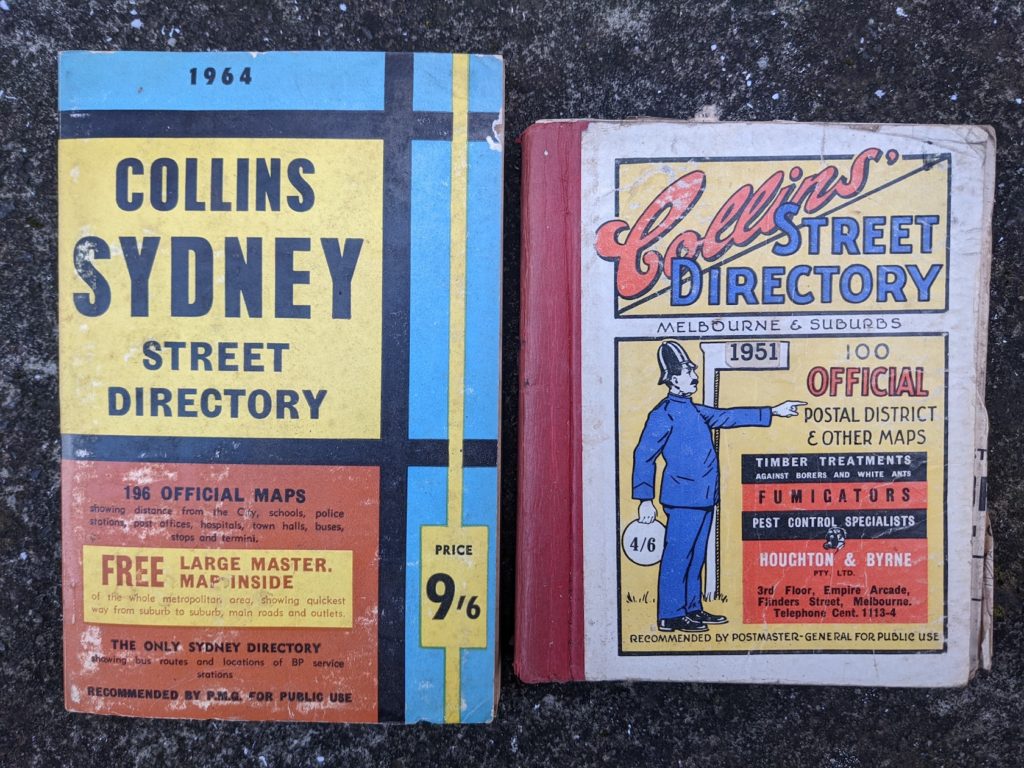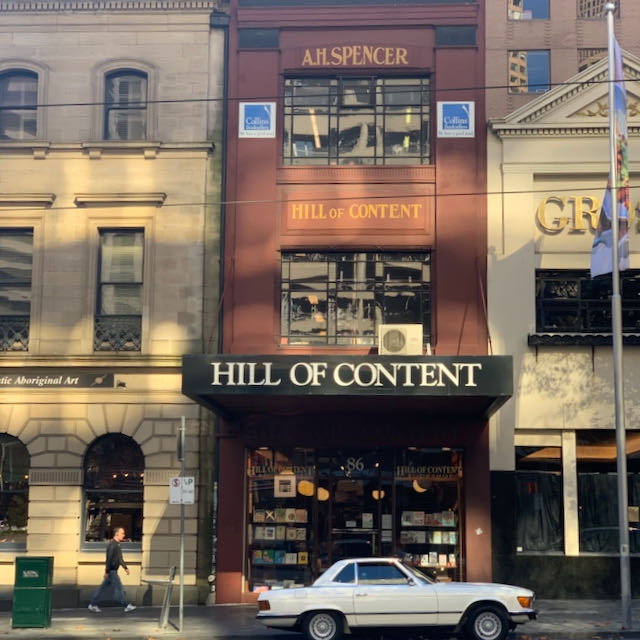The Collins Booksellers story
May this year marks the 100-year anniversary of Collins Booksellers, which was established by Fredrick Henry (Harry) Slamen in 1922. The company celebrated its centenary over the weekend, where it announced the establishment of the Australian Political Book of the Year Award, a new literary prize for political writing. Collins national book buyer Diana Johnston, who previously ran the Collins Bairnsdale store in regional Victoria for over 15 years, shares the history of Collins Booksellers with Books+Publishing—from publishing street directories to fighting censorship and opening 90s superstores, and selling a fair few books along the way.
Fredrick Henry (Harry) Slamen first opened a newsagency in Melbourne at 622 Collins Street in 1922, and by the 1950s, with another branch at 361 Swanston Street, he was one of the largest in newspaper agents in Melbourne, selling over 300,00 copies of the Herald every day. It wasn’t long before Harry Slamen opened yet another store at the corner of Elizabeth and Bourke Street. It was managed by a fellow who, oddly, was named Charles Dickens and, appropriately, had worked for the bookseller Robertson and Mullens. His background in books was probably the impetus behind the introduction of books into the Slamen business.
Slamen was a long-time admirer of the Hill of Content Bookshop at 86 Bourke Street, and when the shop came up for sale, he was keen to buy it. Also established in 1922, by A H (Bertie) Spencer, the Hill of Content was one of the best-known quality bookshops in Melbourne. Unfortunately, Slamen was outbid by Angus & Robertson; however, not to be deterred, he eventually bought the freehold, and when the occupants’ lease expired he refused to renew it and set up his own bookshop in the premises. Next he visited every bookstore in Melbourne, secretly observing their managers. Deciding that Ron Dyer from Hills Bookshop was the man to manage his store, Slamen persuaded him to join his team. Dyer was to become the first manager of Hill of Content under the Collins brand, with Hungarian-born Susan Alberti employed as deputy manager. In the three-storey building, the ground floor was the general bookshop, the first floor was devoted to art books and prints, and the third floor was occupied by the Collins head office.
Michael Zifcak began working for Slamen in 1950 as an accountant but by 1953 was playing a key role in business decisions. As Melbourne didn’t have a satisfactory street directory he suggested to Slamen that Collins publish one similar to a popular edition used in Paris. With about 100,000 immigrants arriving in the city each year and so many new streets, a directory would certainly be a success. They printed 5000 copies of the Collins’ Melbourne and Suburban Street Directory, which sold out in no time. The Collins’ Directory became an annual publication renowned for its accuracy and at its peak in popularity, the print run was 17,000 copies annually.

On 4 December 1961, Slamen was tragically killed in a car accident, leaving his wife Melba and three young children. Slamen’s executor QC Stanley Lewis suggested that the Collins Company be sold but Zifcak, knowing the business was doing so well, begged Melba not to do this and promised to do all in his power to grow the business. The management team now consisted of Ron Steel, Ron Dyer, Susan Alberti and Maurie Craven. Vicki Kilborn was still looking after them and making the tea.
Collins ventured into the education market during the 1960s with a store at the new Monash University, opening the doors at a temporary location with a customer base of roughly 345 students. A permanent store was set up a couple of years later when student numbers had grown to 3300 and was eventually taken over by the university.
Branching out
In March 1965 the Australian announced that Collins had launched a new publishing company, Hill of Content Publishing, which had historical and general books on its list, as well as a collection of folk songs. As a reward for their efforts the senior managers were given shares in this company. In its early days, Hill of Content Publishing produced books by the renowned leader in meditation and relaxation Ainsley Meares, and it was he who introduced the team to Ian Gawler. His publication You Can Conquer Cancer sold 100,000 copies in Australia alone and was translated into eight languages. The company also published the first book in Australia on in-vitro fertilisation, The Test Tube Baby by Karl Wood.
During the late 1960s and early 1970s the censorship laws were rigid, irrational and inconsistent. For example, D H Lawrence’s Lady Chatterley’s Lover was banned when imported to Australia on the grounds that it was deemed obscene, but later it was printed and available in NSW but not Victoria. Collins was prominent in the battle against these harsh laws.
Collins Booksellers expanded considerably in the 1970s and it became necessary to restructure its head office. Peter Shaw took on the job of general manager; Shelly Roberts of marketing and sales; Joel Fulton was the group buyer; and Bill McLennan led the drive to establish stores in NSW. The aim was to make Collins Booksellers a national chain. Soon branches opened in Paramatta, Hornsby, Newcastle and Tweed Heads. Later, Collins opened stores in Queensland, WA and ACT. It also moved into shopping centres, opening suburban Melbourne stores in Northland, East Preston and the Westfield centre in Doncaster.
Franchising in the book industry didn’t really exist worldwide until Angus & Robertson opened its first franchise store in Australia in 1977. Collins wasn’t really interested in franchising, but eventually gave into the persistent requests by Trevor Muntz, a fellow determined to establish a bookstore in Bairnsdale under the Collins banner. Collins franchising began with the company philosophy, ‘We will treat our franchisees as we treat our own branches.’ Once Bairnsdale proved successful, Collins’ management set about finding franchisees, mainly in rural centres throughout Victoria and New South Wales and later in WA and Queensland. At the same time, the company was also expanding and opening Collins Booksellers stores, mostly in shopping centres throughout the country.
In 1992, when the new international terminal was opened at Melbourne airport, Collins won the tender to set up two new stores there. These were state-of-the-art shops, designed in stunning colours to complement the books displayed and reflecting the company’s modern image. The next year Collins also opened a similar store at Sydney airport’s international terminal.
The 90s saw a worldwide trend in the book industry of superstores, and following this Collins set up a large, unique bookshop in the old Grace Bros Building in Sydney. This model bookstore stocked an outstanding range of books of all genres, a cafe and even boasted an antiquarian book room. It was a showpiece in the Australian book world. A report in the Australian in March 1998 described the store as such: ‘A revolution in books begins today as the first superstore opens in Australia. In opening the superstore in Broadway shopping centre ($170 million revamp of the old Grace Bros store), Collins Booksellers is firing the first shot in the campaign that will irrevocably alter the dynamics of bookselling.’

The new millennium
Collins was modernising and preparing the company for the 21st century. This modernisation included a change in the structure at head office. The office moved to Lonsdale Street, and the old guard was almost completely replaced by a young team filled with the enthusiasm to revamp the company. The future of Collins Booksellers going into a new millennium looked promising. However, in June 2005, Collins Booksellers Pty Ltd went into voluntary administration. When the news broke, several of the Collins franchise stores were approached by other chains. For most, the idea of becoming a Dymocks, Angus & Robertson or Book City store was unthinkable. They were proudly Collins and desperately wanted to hold onto the brand.
An emergency meeting was called in Melbourne, chaired by franchisee Duncan Johnston, who had devised a plan for the franchisees to buy the franchising arm of the Collins business. This sector of the company was actually quite profitable as the franchise stores were paying their monthly fees to the company. There were 32 stores and each put up a nominal amount for a deposit and the bank funded the rest. The sale went through.
The respective Bairnsdale and Sale franchisees, Diana and Duncan Johnston and Liz and Trevor Watt, purchased the iconic Hill of Content store, and Collins Booksellers in its new guise opened for business on the second floor of 86 Bourke Street, Melbourne. Although Duncan Johnston was the CEO, he still had his accounting practice in Bairnsdale. Once the new entity found its feet, some valuable team members came on board, including the well-respected Peter Lothian, who had a long history in the book industry and took on the role of CEO.
In November of 2007, the company purchased the Book City franchise and the group expanded considerably and, in 2011, when Angus & Robertson went into receivership, some of their franchise stores transferred to the Collins brand. All these new entities broadened the scope of the company and made their own valuable contribution to the integrity of the Collins brand. With the highs and lows of the book industry over the last decade, sadly some stores haven’t survived or franchisees have simply retired after a long period working in a business they loved.
Our Collins family is now made up of franchisees from 25 stores spread nationwide. Each is privately owned and reflects the literary needs of their unique communities. We are a very close group, bound together by our common passion for the written word.
Diana Johnston is the Collins national book buyer and previously ran the Collins Bairnsdale store in regional Victoria for over 15 years.
Category: Features




